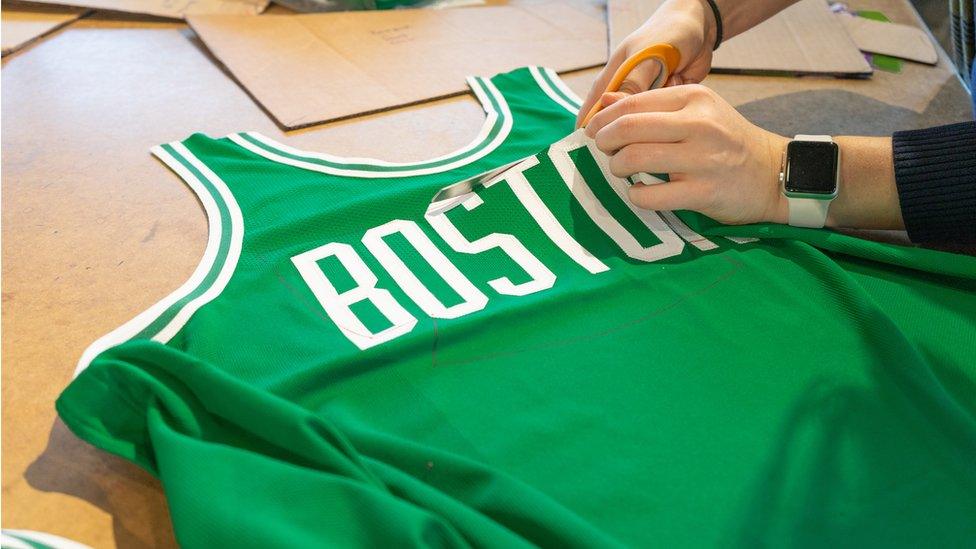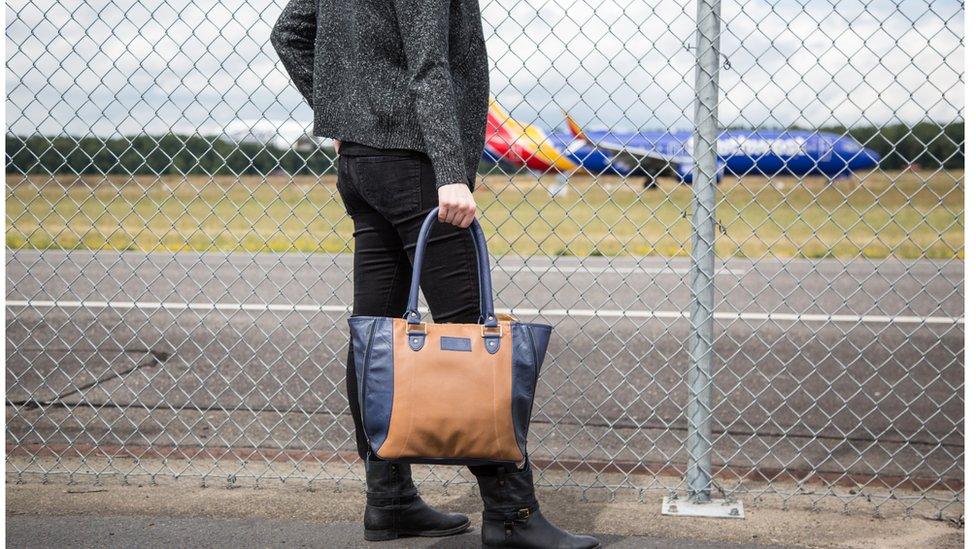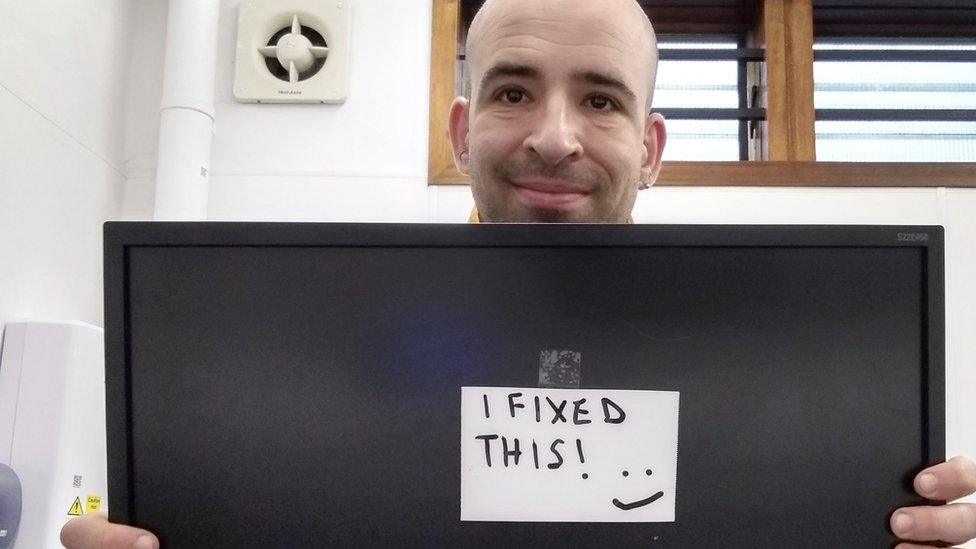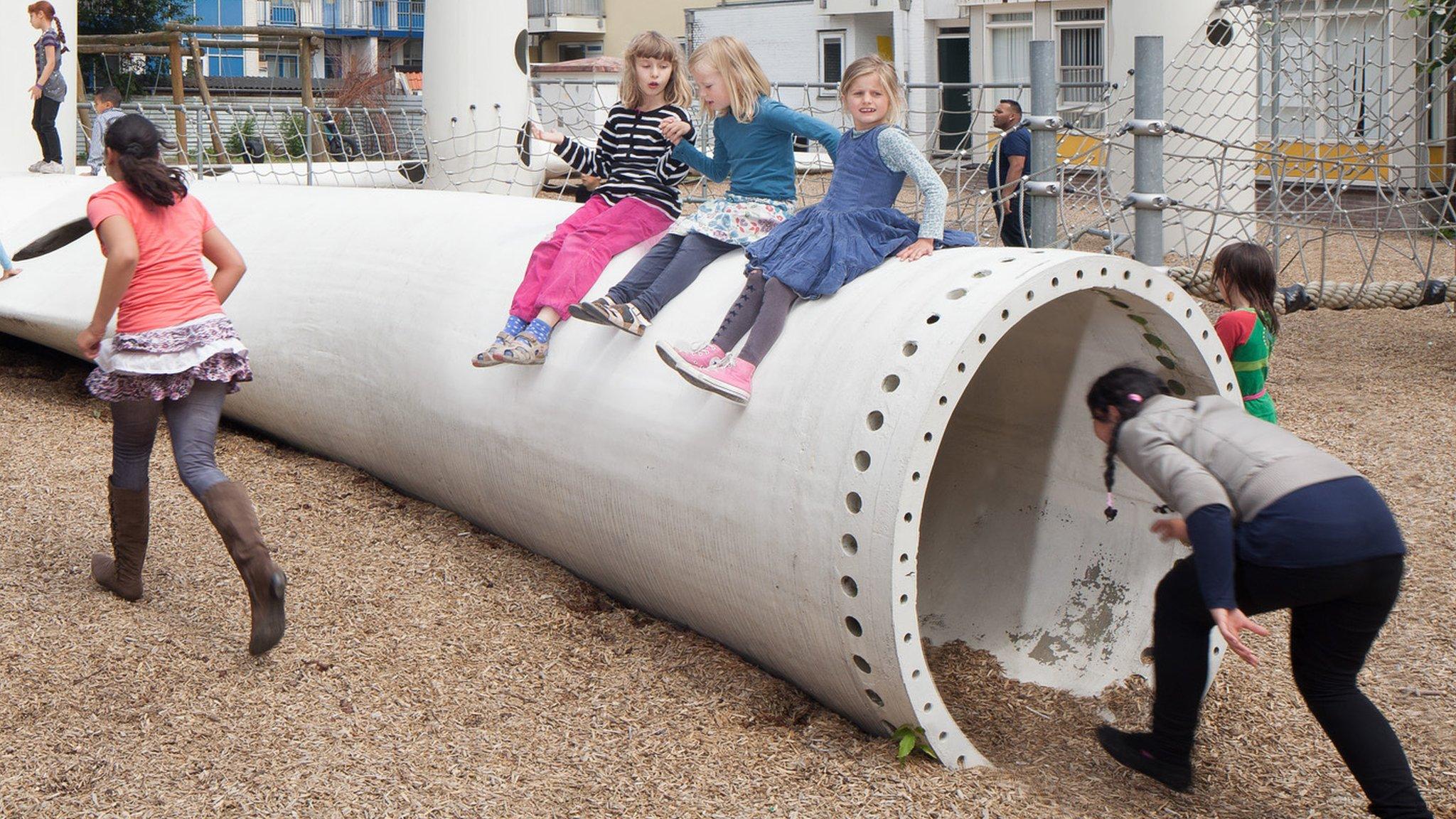Upcycling sports shirts and aeroplane seats
- Published

"When I started talking about upcycling, people thought I was talking about riding bikes uphill," laughs Scott Hamlin.
But the former Adidas boss has a simple, yet ingenious, business model - he buys unwanted tops from professional sports teams, upcycles them into merchandise and sells it back to them.
He first began the business with Portland Trail Blazers shirts, a professional basketball team in the US.
"They came to us with jerseys of four players that were traded and they wanted us to create something for one of their green games," Mr Hamlin says.
The green games are part of the National Basketball Association's (NBA) environmental initiative called NBA Green, which creates awareness and raises funds to help protect the environment.
Mr Hamlin's company Looptworks used the material from the jerseys to create a scarf, sling bag and toiletry bag. The company then sold back the finished products to the Trail Blazers, who sold the items at their team store and online.
Once others saw Looptworks' handiwork it soon found itself with more orders from NBA clubs.
The NBA has strict rules around its official sports tops, which are not allowed to be sold once players are traded (when a player is transferred from one club to another), if they retire or if the sponsor changes.
This means that a club can get stuck with hundreds, sometimes thousands, of unsellable items.
As a veteran of the sportswear and outdoor clothing industries, Mr Hamlin saw first-hand the huge amount of waste being produced.
He estimated about 15%-30% of all materials in the development and production process went unused, often going to the incinerator or landfill.
''It hit me, what we really need to do is just stop... and not create any new materials until we use the ones that already exist," he said.
That inspired Mr Hamlin to set up Looptworks, with the mission to "close the loop", by taking excess textiles and transforming them into consumer goods such as bags, accessories and clothing.
Mr Hamlin thinks upcycling - defined as the process of reusing waste materials to create a product of higher value or quality - is a better solution than recycling. ''Upcycling is different from recycling because then you are grinding up materials and adding more energy footprint to the material, which is better than burning or landfilling, but not as efficient as upcycling.''

A bag made from aeroplane seat leather
But it's not just sports tops that are getting overhauled.
When airlines update their plane interiors and refit cabins, Looptworks takes their used leather seat covers to craft them into purses, bags and luggage. One of its biggest clients is Southwest Airlines. Looptworks' other non-sports clients include outdoor clothing firm Patagonia, Wells Fargo bank and Subway.
Mr Hamlin has plans to expand to other sports and countries, and is talking to some ''notable brands'' in Europe about potential partnerships.
When asked about any future collaboration with football clubs, he says: ''Personally, Barcelona, Manchester United, Ajax, Paris St Germain, Manchester City and Real Madrid would top my list.''
The UK-based Textile Recycling Association says both the reuse and recycling of clothing are playing a bigger role in sustainability efforts.
"With the advent of fast fashion and rapidly rising consumption rates we are now potentially looking at hundreds of thousands of tonnes of used clothing being discarded annually (globally) and I think that upcycling will only be able to cope with a limited amount of this," says spokesman Alan Wheeler.

Upcycling is also becoming popular for extending the life of furniture and household items. Canada-based Upcycle That takes items such as skateboards, tea-cups and plastic bottles and reinvents them for corporate clients and individuals.
"When people upcycle, they experience first hand what it means to take something that was previously considered waste and turn it into something functional and beautiful," says Upcycle That co-founder, Judy Rom.
"This leads to a mindset shift around waste and gets people to think twice before throwing something away."
- Published17 February 2020

- Published7 February 2020
